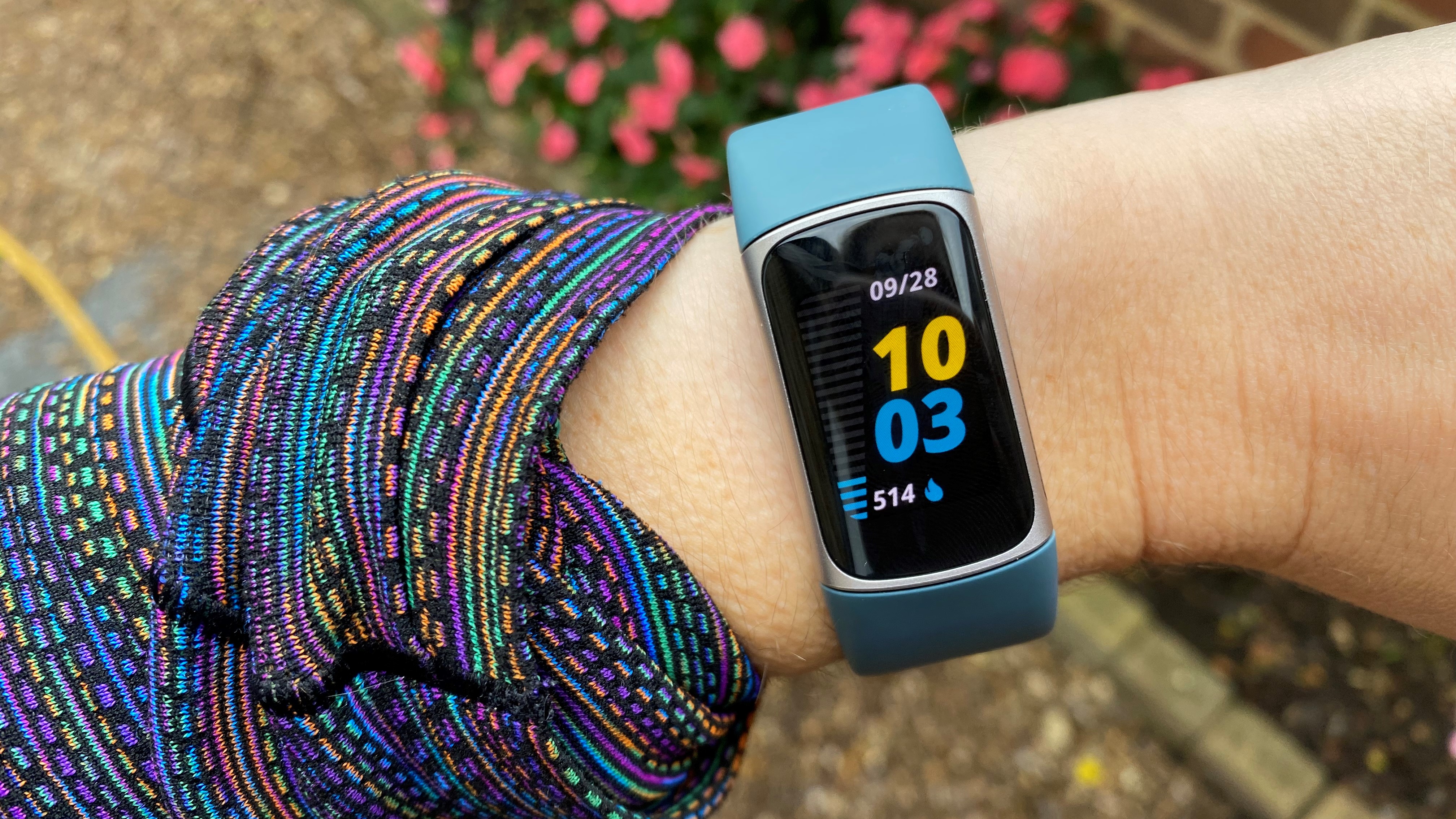Tom's Guide Verdict
With a bright screen, in-built GPS, and advanced tracking metrics, the Fitbit Charge 5 is a brilliant tracker for most users.
Pros
- +
Bright, always-on display
- +
Fast connecting GPS
- +
Addition of an ECG monitor
Cons
- -
Lack of buttons on the Fitbit makes usability frustrating
- -
No Spotify compatibility
Why you can trust Tom's Guide
The Fitbit Charge 5 is one of the best fitness trackers on the market. It’s Fitbit’s most advanced tracker yet and has a number of features usually reserved for its more expensive trackers. It's not cheap, but if you're using a tracker that's a few years old, you'll definitely notice the difference. Be sure to read the full Fitbit Charge 5 review below to find out why.
Price: $179.95
Battery life: 7 days
Display: AMOLED
Screen size: 0.86 X 0.58 inches
Resolution: 326 PPI
Built-in GPS: Yes
Heart rate monitor: Yes
SpO2 monitor: Yes
ECG monitor: Yes
Fitbit pay: Yes
On-board music storage: No
Weight: 0.98oz
Size: 1.4 inches L x 0.89 inches W x 0.44 inches D
At $179.95 the Fitbit Charge 5 is $29.95 more than the Fitbit Charge 4 was when it hit the market. Like the Charge 4, it’s got in-built GPS, but for the newer model, Fitbit has added a bright, always-on color touch screen, an electrodermal activity sensor (EDA), an electrocardiogram sensor (ECG), and a new metric called "Daily Readiness Score", which helps wearers to work out more intuitively. This review has been updated now the Daily Readiness Score and the ECG functions are available on the tracker.
The bright display is easy to read, even in direct sunlight. It looks great and it’s comfortable to wear, plus like the Charge 4, it’s one of the best fitness trackers on the market, but right now, it’s not bringing anything new to the table — it just looks and feels snazzier.
- The best cheap fitness trackers
- The best Fitbit to buy in 2021
- News: Fitbit’s most stylish fitness tracker just got a major upgrade
Fitbit Charge 5 review: Price and release date
The Fitbit Charge 5 costs $179.95, which includes a six-month Fitbit Premium membership. It is available in three colors: Steel Blue/Platinum, Black/Graphite, and Lunar White/Gold. Those who purchase the Charge 5 will also get a six-month Fitbit Premium membership for free, which will give them access to additional features, such as a Health Metrics dashboard, guided video, and audio workouts, and sleep and mindfulness tools.
The Fitbit Charge 5 went on sale on September 27 2021, and is available to buy now.
Fitbit Charge 5 review: Design
The most significant design change to the Fitbit Charge 5 is the color OLED screen, which is two times brighter than the Fitbit Charge 4. It’s easy to see, even in direct sunlight and Fitbit has now made the AMOLED display a touchscreen. To navigate around the tracker, you have to scroll to the right from the home screen; to return back to the home screen at any time, you double-tap. All of the functions on the tracker are controlled via the touch screen display, aside from the two side panels, which are used for the EDA and (later down the line) ECG sensors.
Scrolling right from the home screen, you can view your Smartphone notifications (although you can’t respond to messages from the tracker), start an activity, set timers and alarms, and do an EDA scan. The Charge 5 is Fitbit’s first tracker to include an EDA sensor, which measures the body’s response to stress through changes in the sweat glands on the skin. Fitbit says this is in response to the (perhaps unsurprising) data that suggests that 40% of adults said they experienced a lot of stress in 2020. Fitbit first launched EDA with the Fitbit Sense, released last fall, so it’s exciting to see it’s being rolled out to the more affordable items in their catalog.
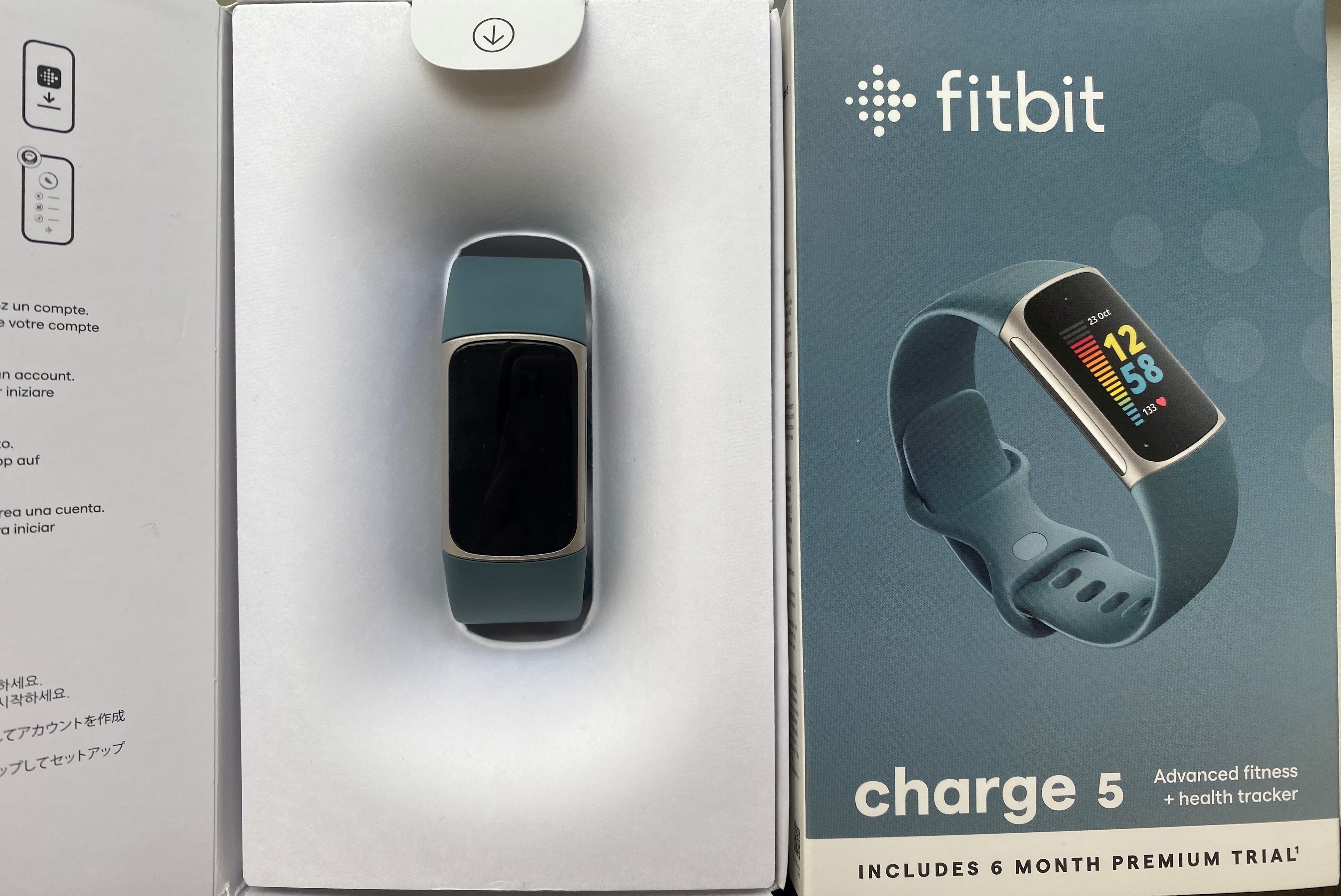
Fit-wise, the Charge 5 was comfortable to wear. It’s 10% thinner than the Charge 4 and unlike the Charge 4, which gapped at the edges where the Fitbit connected to the strap on smaller wrists, the Charge 5 fits well. In the box, there’s a small and a large band, which is handy, especially if you’re not sure which size to buy.
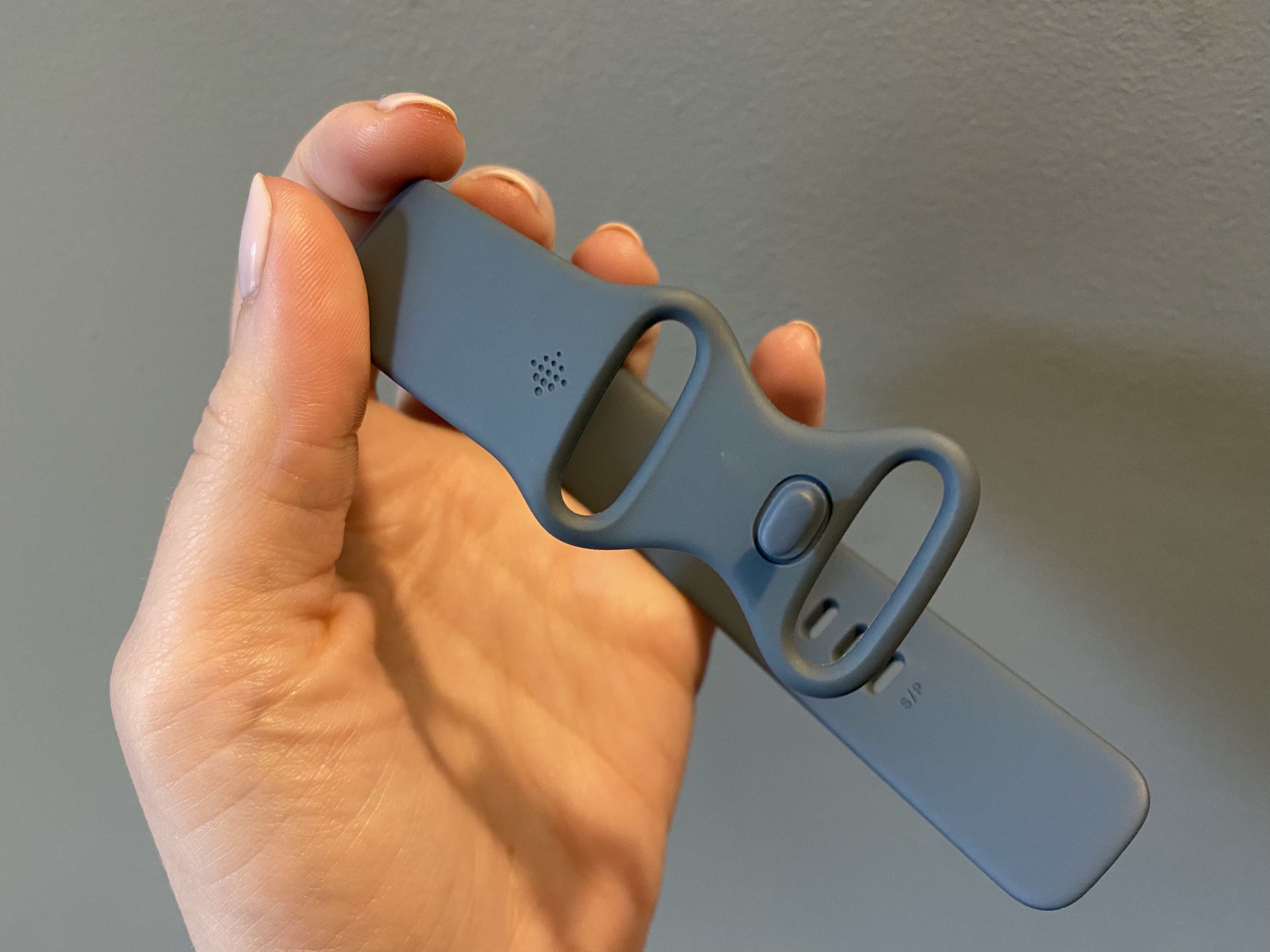
Charge 4 users will be disappointed to hear that they can’t use their older wrist strap with the Charge 5, or the same charger, as once again, Fitbit has updated the charging port.
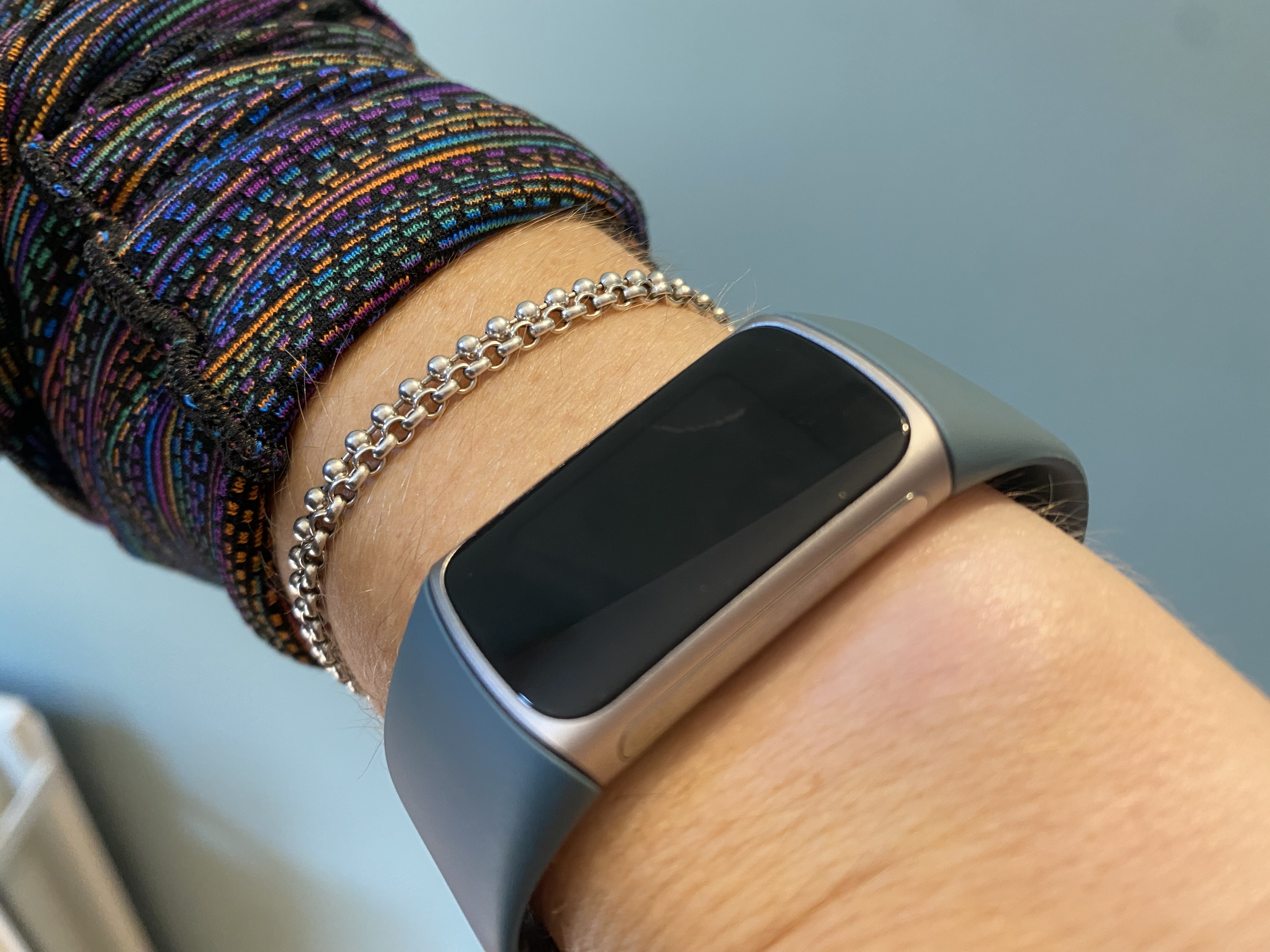
Fitbit Charge 5 review: GPS and running performance
I’m the first to admit, my running watch of choice is normally a much bulkier piece of kit – for the past year, I’ve been running with the Garmin Fenix 6S Pro, and next to the Fitbit Charge 5, it’s huge. I liked how slim the Charge 5 sat on my wrist – it looked attractive and I wouldn’t mind wearing the Charge 5 casually on the weekend or dressed up for meetings at work.
While I found the touchscreen design easy to navigate around during a HIIT session, the lack of buttons was a detriment during a run. Although the screen is bigger than it was on the Charge 4, it’s not big enough to see all your key metrics in one place. In the running mode, the Charge 5 shows you three metrics: your mileage at the top of the screen and how long you’ve been running at the bottom — pretty standard. The difficulty lies in the middle of the screen, where you can see one of nine different metrics, including your average pace, your current pace, and your heart rate. Scrolling through these while sticking to your pace can be fiddly, especially with sweaty fingers.
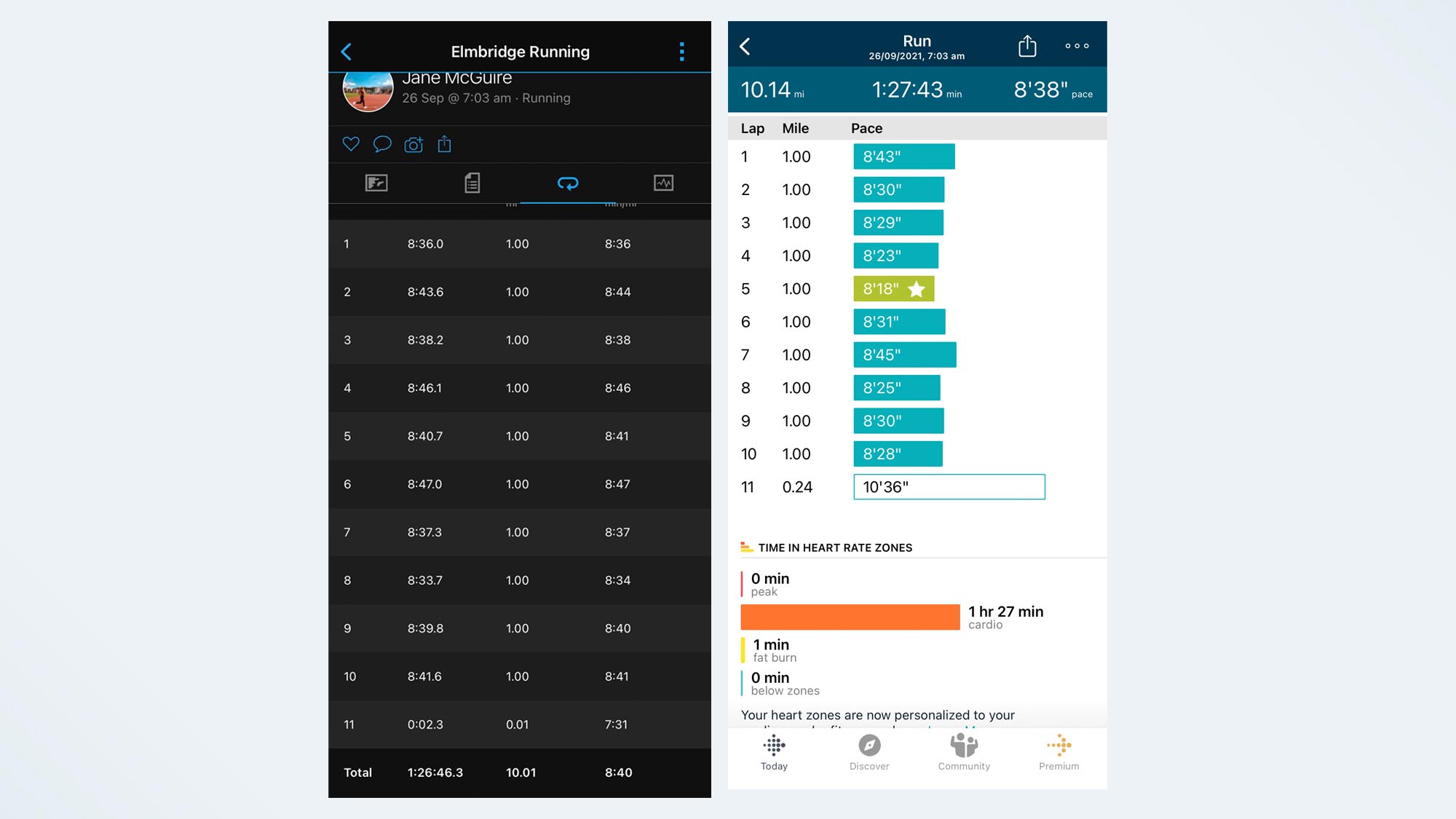
When I went out for a 10-mile training run, the Fitbit’s GPS connected slightly less quickly than my Garmin, but still within a few seconds, so I didn't need to endlessly pace up and down the street while I waited for the tracker to connect. When wearing the watches side-by-side, I found my average pace on the Fitbit fluctuated wildly and was slightly quicker on the Fitbit than the Garmin. While it’s hard to tell post-run which is more accurate, as someone who runs very regularly, the Garmin split times were closer to the pace I felt I was running - 8:43 minute miles was the marathon pace I was aiming for on the run, whereas the 8:18 minute mile Fitbit recorded during mile five would have been more like my tempo pace.
Distance-wise, my Garmin recorded the 10-mile route as a 10.01-mile run, whereas the Fitbit recorded the run as 10.14 miles. Again, this could be down to the autopause function. I had mapped the route on Strava before heading out.
Of course, this is not to say the Fitbit’s GPS is incorrect — I manually pause my Garmin at traffic lights but had the auto-pause function on when using the Fitbit, so it could be a user error. When running with the Fitbit and the Apple Watch Series 6, I found my split times to be much more similar.
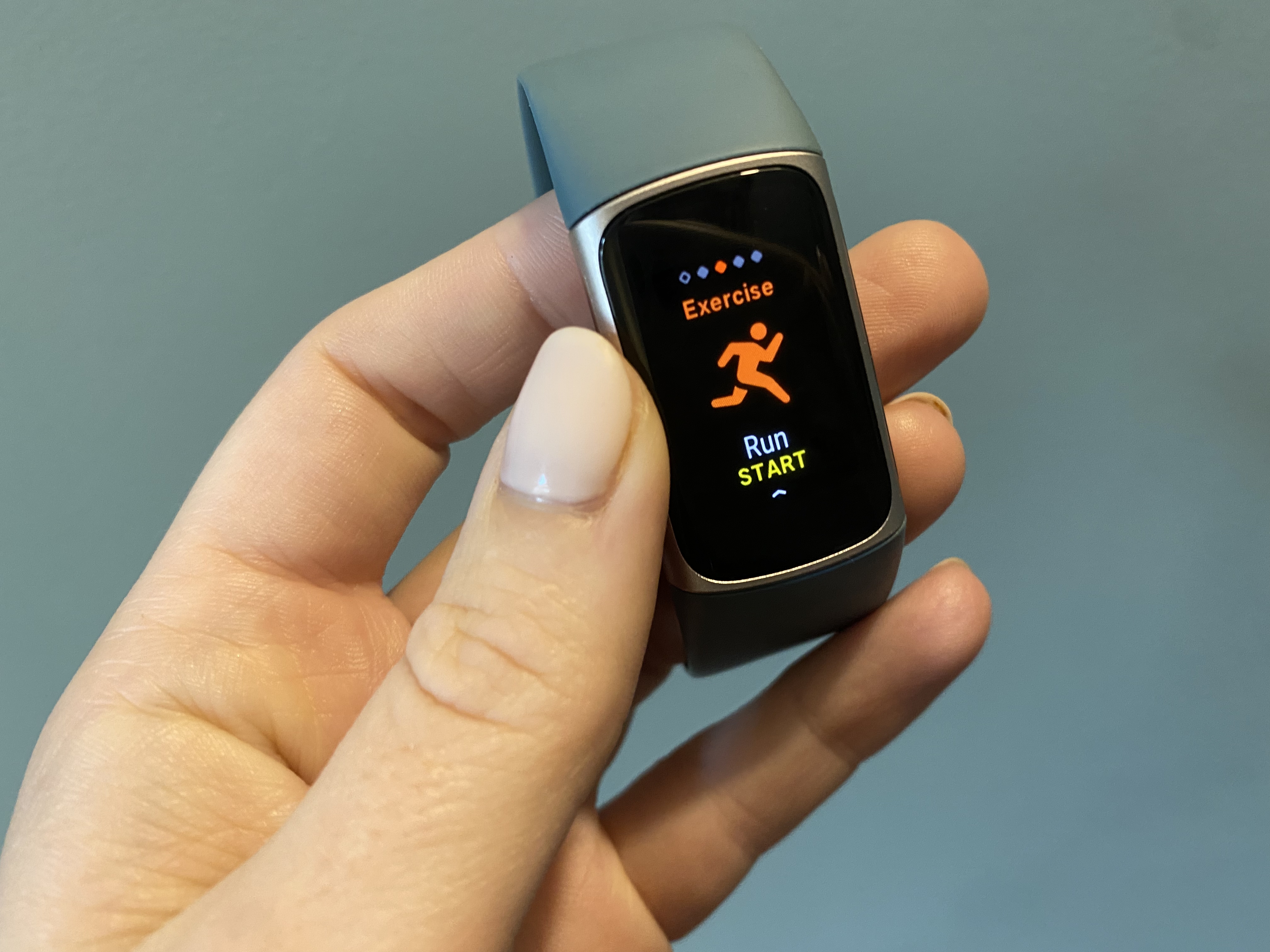
Fitbit Charge 5 review: Activity tracking
The Charge 5 has virtually all the same activity tracking metrics as those available on the Charge 4. You can still only view six sport profiles on the tracker itself and these can be customized in the Fitbit app. The main difference when it comes to activity tracking is that the screen is brighter and the always-on function makes it easier to read on the move, or between burpees.
Like the Charge 4, you also can’t customize what you see in each sports activity profile, but you can turn auto laps on, which gives you the option to receive pace alerts every mile while running, or out on your bike. It’s worth noting these are toggled off by default — something I missed on my first run with the tracker.
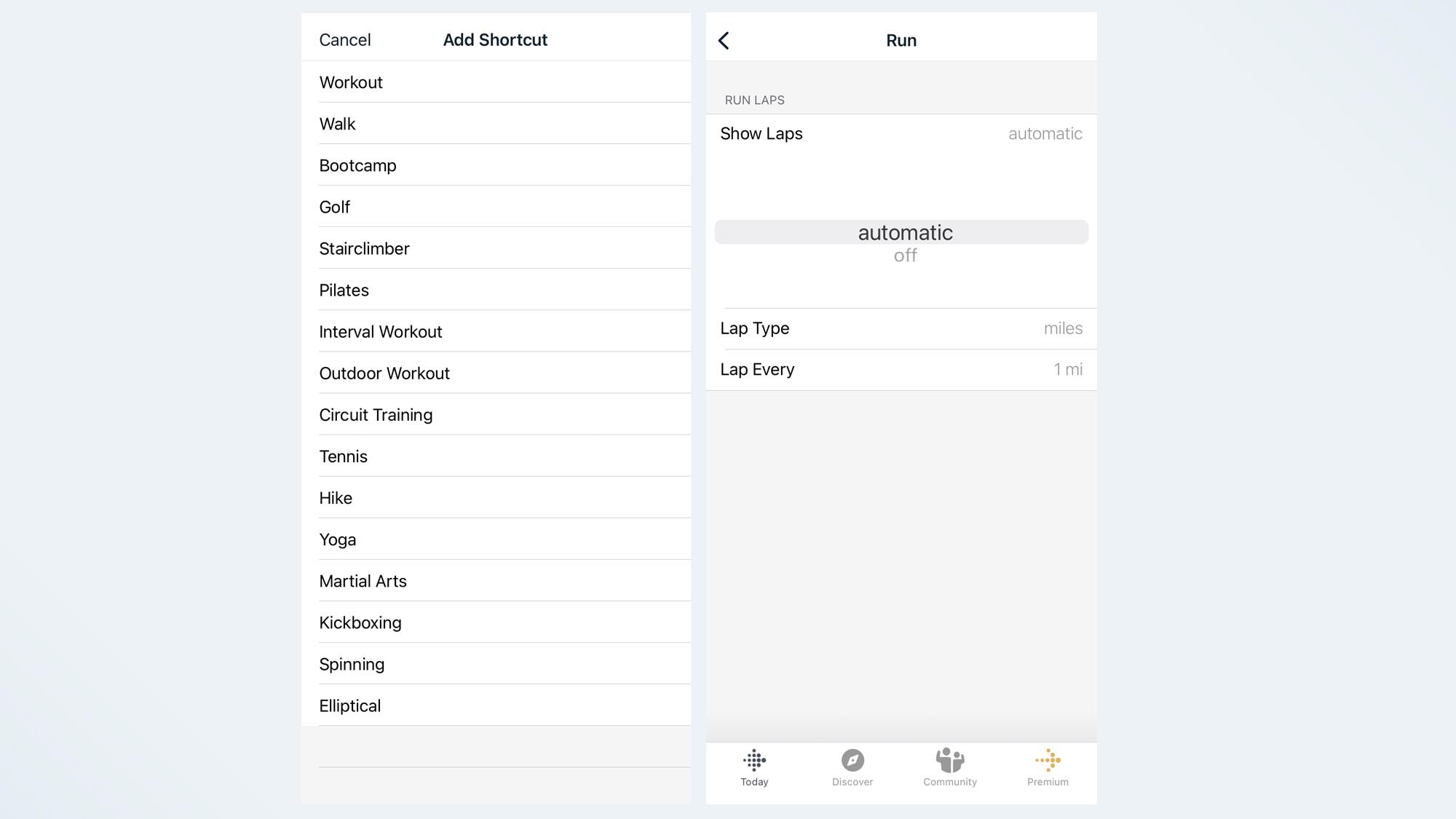
On the tracker itself, you also have the option to set a goal for your workout — be it time, distance, or calories burned. During the activity, it’ll show your progress towards your goal. This wouldn’t necessarily be something I’d use regularly, but it’s a handy feature if you’re someone who tends to bail out of workouts halfway through to check your emails.
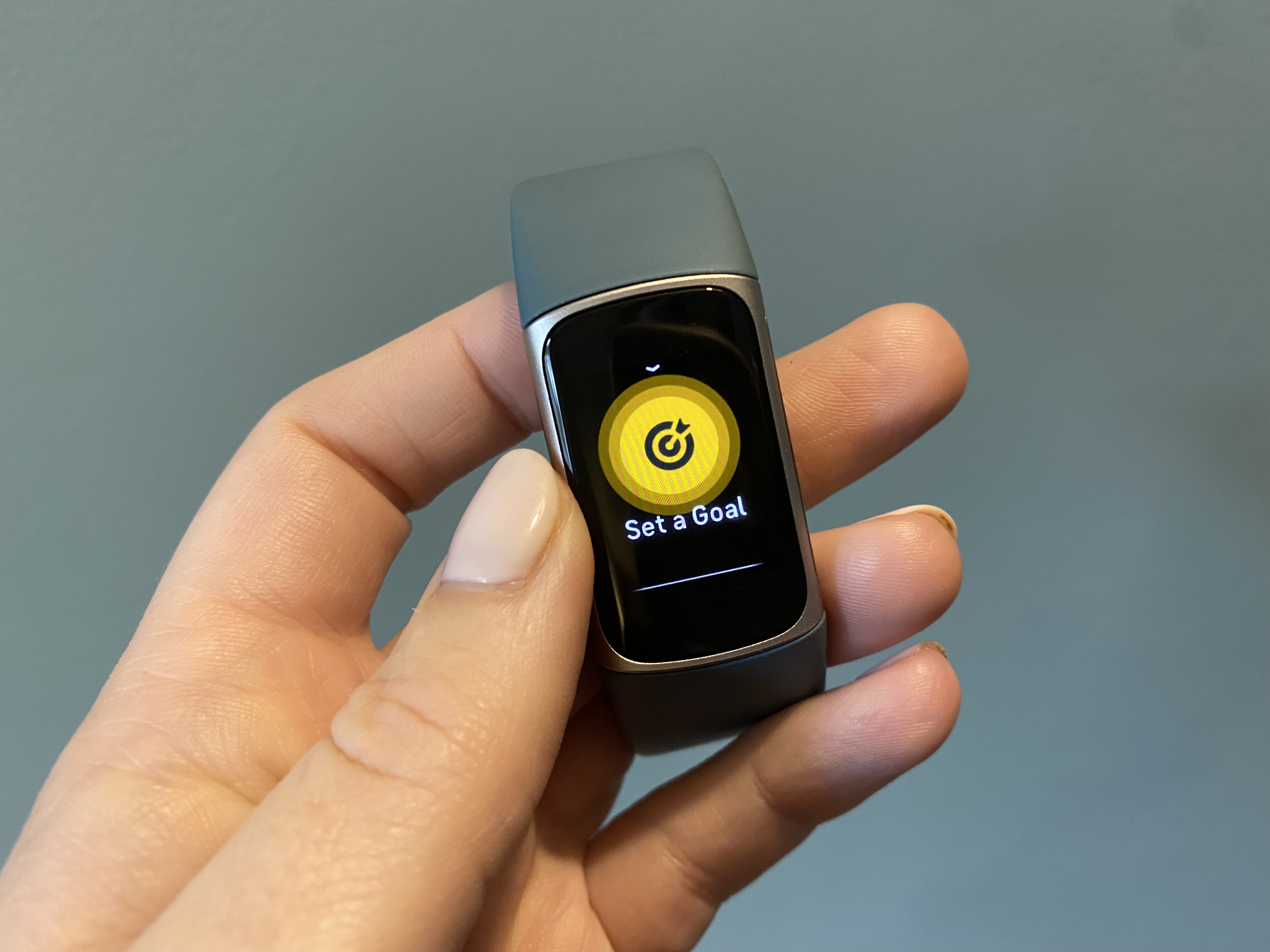
Like the Charge 4, you’ll also see your Active Zone Minutes when completing a workout, and (if you don’t turn them off beforehand), the watch will buzz whenever you move into a new zone. Fitbit added Active Zone Minutes to the Charge line a year ago, with the tracker measuring the time you spend in each target heart rate zone, and track your progress towards a goal of 150 minutes per week.
While I’ve already mentioned some shortfalls with the GPS tracking, my biggest surprise was when the Fitbit auto-recognized a two-hour cleaning session before my in-laws arrived as a swim, but perhaps that says more about my aggressive style of hoovering.
Fitbit Charge 5 review: Sleep tracking
The Fitbit Charge 5 has the same SpO2 pulse oximeter sensor (also found in the Charge 4, Charge 3, Versa, and Ionic) to better help you understand your sleeping patterns. Like previous models, the Charge 5 has all of Fitbit’s standard sleep tracking metrics, although, on the tracker itself, you’ll only be able to see your total sleep time and your sleep score from the previous night. On the Fitbit app, you’ll be able to see your sleep score, sleep stages and set a smart wake alarm, however you have to be a Premium user to get extra sleep data, such as a breakdown of your deep, light, and REM sleep cycles.
Despite Fitbit announcing snore and noise detection alongside the launch of the Fitbit Charge 5, this feature will not be available on the tracker as first thought, due to a lack of a microphone.
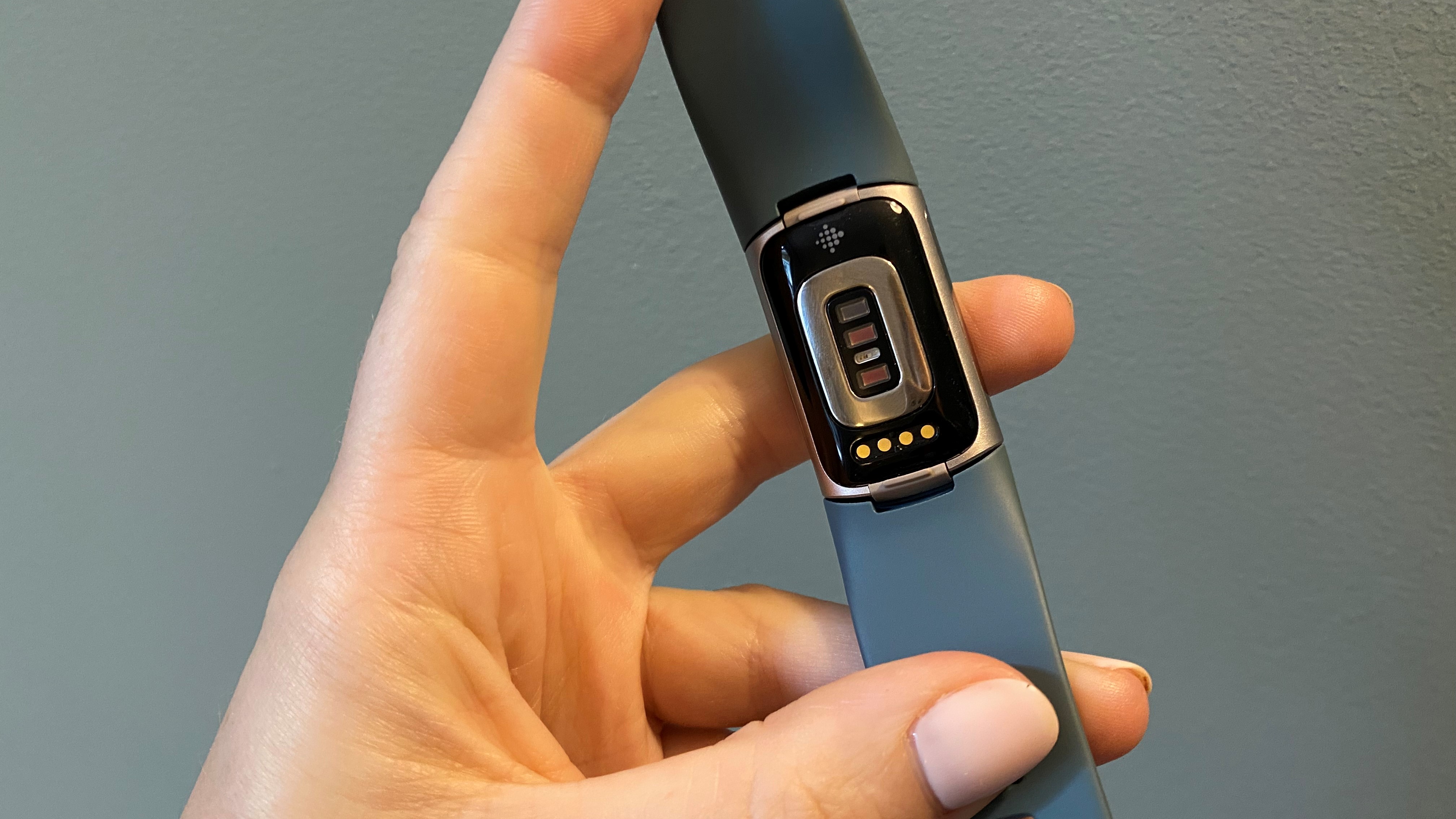
I tested the Fitbit Charge 5 the week before a marathon, so it’s safe to say my stress levels were high, however according to my Fitbit, with a week out from the race, I slept like a babe, with only 11% tossing and turning and a score of 81. That said, as the race drew nearer, my sleep became more restless, with the Fitbit recording that I spent 34 minutes awake the night before my last long run. While I’m not sure I need reminding that being nervous affects my ability to sleep, it’s interesting to see how rested (or unrested) I am each morning. Like with the Charge 4, the Charge 5 features Fitbit’s Smart Wake feature, which uses machine learning to know the best time to wake you up. I only wish Fitbit could find a way to program my puppy to do the same.
Fitbit Premium
As you might have noticed by this point in the review, a lot of the features on the watch are reserved for Fitbit’s Premium users. The Fitbit Premium membership launched two years ago and costs $9.99 per month. The subscription service offers personalized workouts, health and sleep insights, and coaching from top trainers.
Recently, Fitbit announced partnerships with the likes of LES MILLS to increase the variety of workouts on offer in the app and Calm, the number one sleep app, to give subscribers access to more mindfulness and meditation sessions.
Anyone who purchases a Fitbit Charge 5 gets six months of Premium membership for free, which is a generous amount of time to trial the platform before coughing up each month.
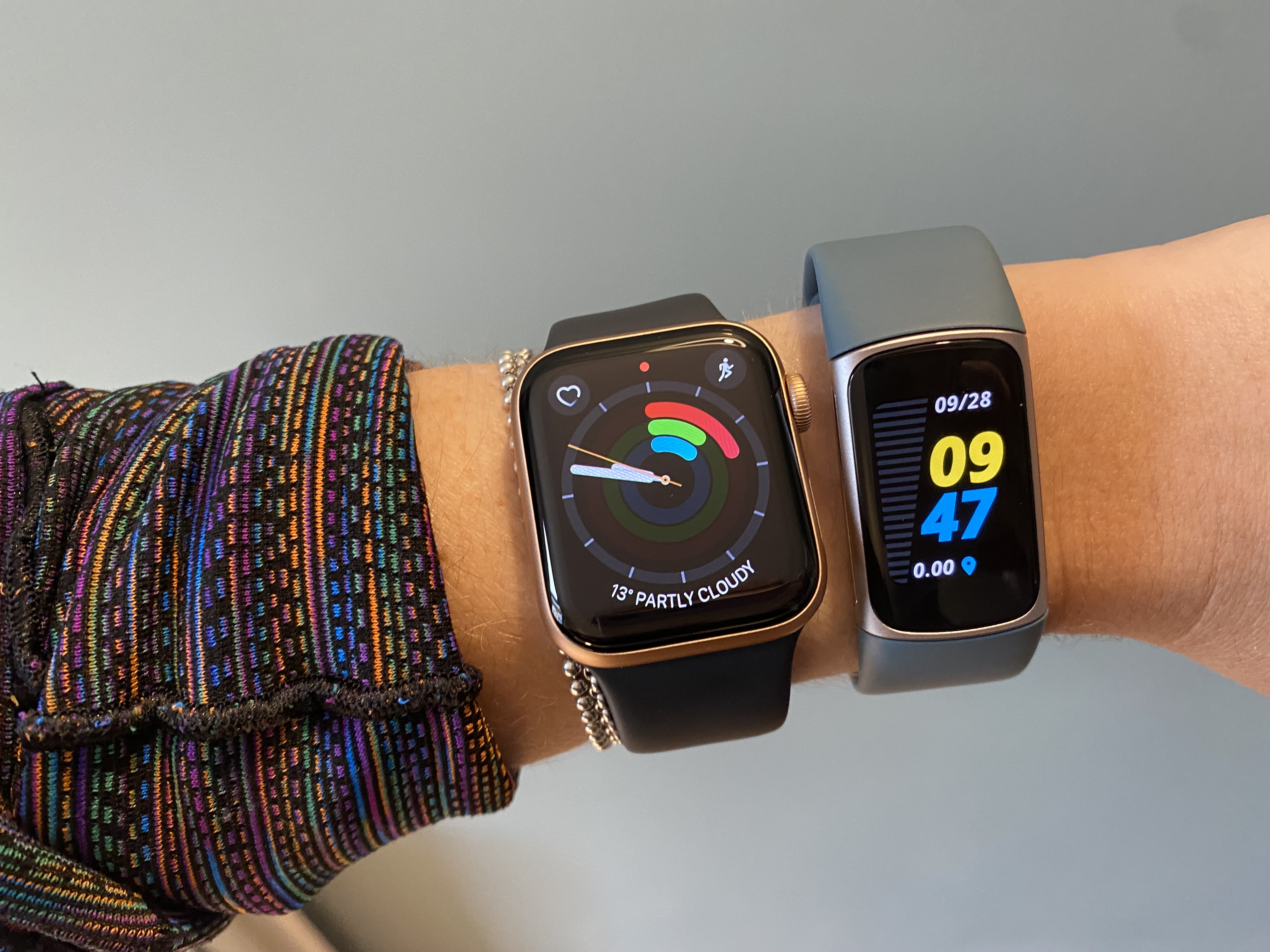
Fitbit Charge 5 review: Daily Readiness Score
Similar to the recovery tools launched by Garmin and Polar last year, Fitbit has launched its own ‘Daily Readiness’ score which is available on the Charge 5, as well as the Fitbit Sense, Fitbit Versa 3, Fitbit Versa 2, Fitbit Luxe and Inspire 2. Based on three different metrics - your fitness fatigue (activity), your heart rate variability (HRV), and your recent sleep, users will be given a score each morning which indicates their body’s readiness for exercise. Based on your Daily Readiness score, your recommended target Active Zone Minutes will change and Premium members will get personalized recovery content.
I’ve been using the Fitbit Daily Readiness Score for the past few weeks and have been impressed with how well it seems to read my recovery. I woke up one morning to find I had a Daily Readiness Score of 88, with my Fitbit reading, “Get ready to tackle today’s workout! Your body indicates you’re ready to perform”, so I set out for a 10-mile tempo run, and I did indeed feel great. The next day I woke up to a score of 51, with my Fitbit saying “You’ve been more active lately, and your readiness score is good. Plan for some moderate exercise, but don’t overdo it”, so I knew I’d slept well enough to head to the gym for a light strength session. While two weeks isn’t long enough to make a conclusion on long-term training results, I felt the Fitbit’s scores did reflect how I was feeling in myself after my workouts.
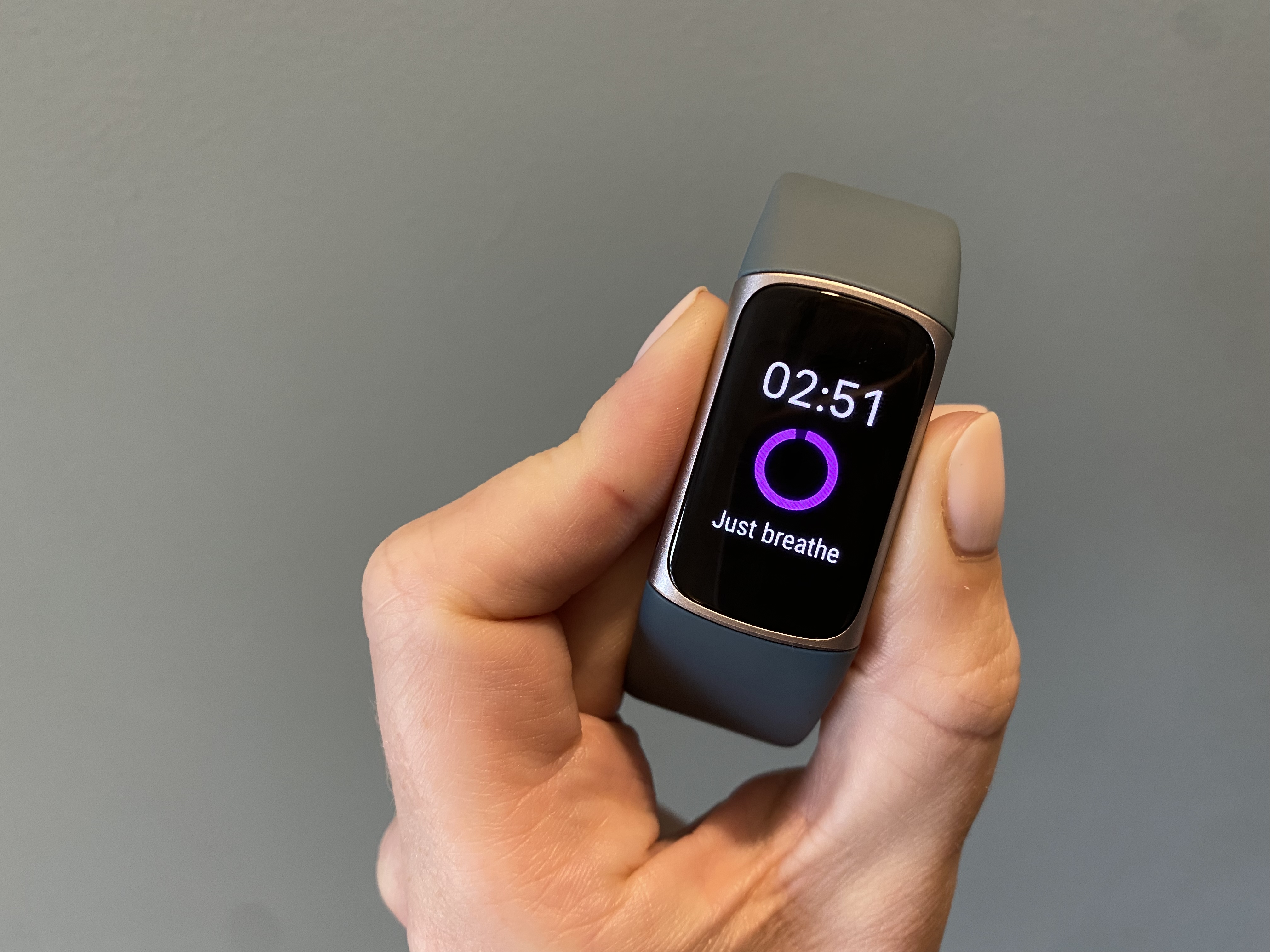
Compared to the Fitbit Charge 4, there are also some other notable features that Fitbit has removed from the Charge 5. Some of these are minor — you can no longer control your phone’s Spotify music from the tracker, but I’m not sure whether this was something many users would ever have done regularly. There’s also no longer a weather app, and the guided breathing and relaxation sessions have been moved from the tracker to the Mindfulness section in the Fitbit app. Premium members will be able to tune in to more than 300 mindfulness classes in the app, and free users will be able to try 15 before subscribing, although these can only be done from your phone, not your wrist. Fitbit has also removed the altimeter from the Charge 5, which means you’ll no longer get data on how many flights of stairs you’ve climbed in your day.
Fitbit Charge 5 review: Battery life
I tested the Fitbit Charge 5 for five days, using the always-on display when exercising, and didn’t need to charge the tracker once. This is far more impressive than Fitbit’s estimate — Fitbit said using the display reduced the battery life from seven days to two. Compared to the Apple Watch Series 6, Fitbit’s battery life is a dream, however, if you decide to have GPS, heart rate monitoring and the always-on display turned on all the time, you can probably expect to charge your tracker every couple of days.
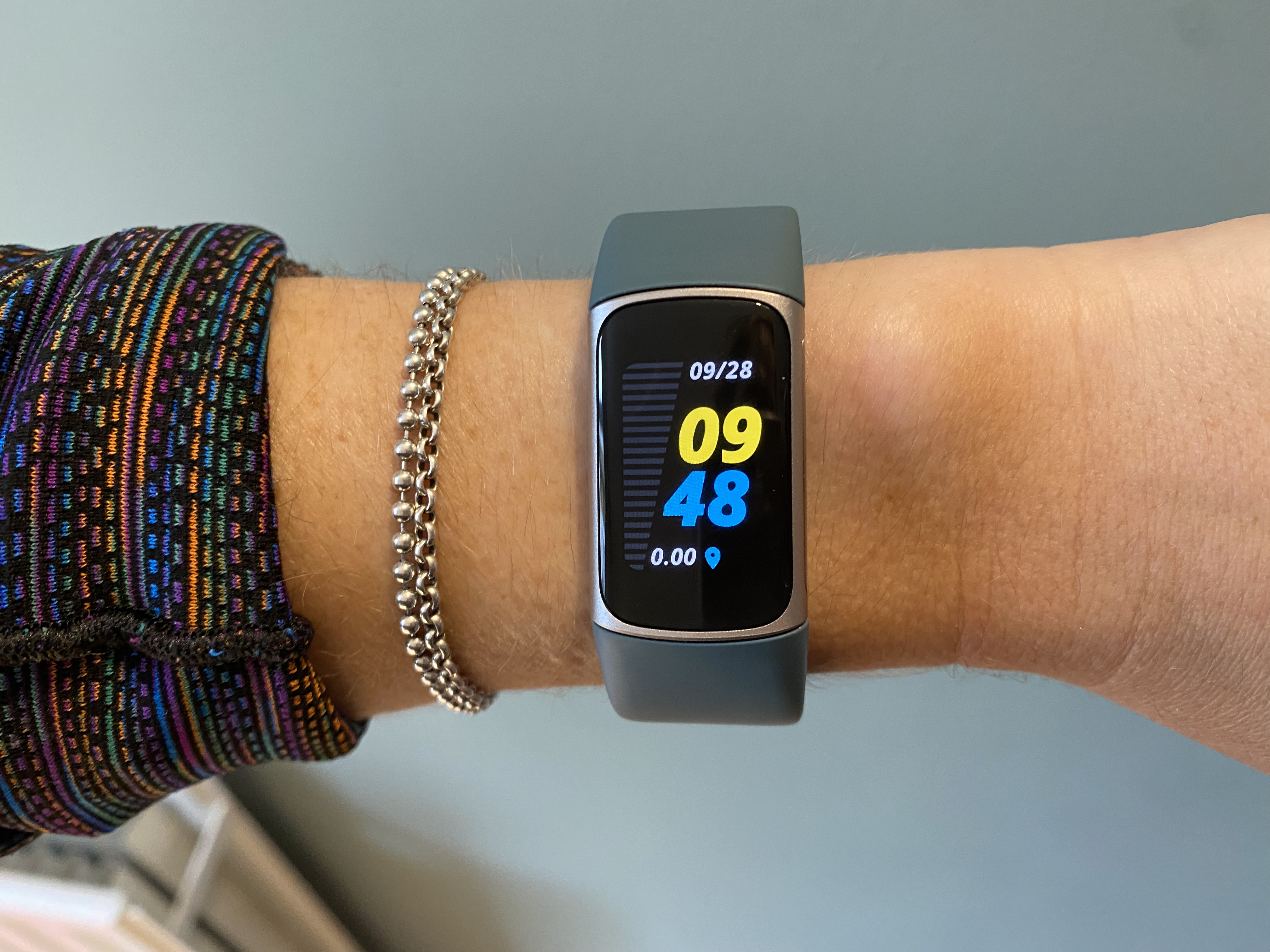
Fitbit Charge 5 review: Verdict
Overall, the Fitbit Charge 5 is a very good fitness tracker and got even better once the new features rolled out. When I first tested this tracker, I concluded that if I had a Fitbit Charge 4 on my wrist, I probably wouldn’t upgrade to the Charge 5, yet having used the Daily Readiness Score, I think I would. The daily score allows you to get into the habit of listening to your body, and working out more intuitively, rather than just hitting the gym because you feel like you should. If I was using a Fitbit Charge 3 or younger, I would upgrade in a heartbeat as the new display alone makes this a joy to use.
If you’re looking for more of a smartwatch than a fitness tracker, I’d probably opt for the Fitbit Versa 3 over the Fitbit Charge 5, which supports Alexa and Google Assistant, and allows you to answer phone calls from your wrist (but only if you have an Android phone).
Finally, if you’re a dedicated runner, this isn’t the tracker for you (and I’d argue no fitness tracker will be). Spend $20 more and buy the Garmin Forerunner 55, which is far more user-friendly on the run and still allows you to track multiple sports zones and your sleep, see suggested workouts and get accurate recovery data.

Jane McGuire is Tom's Guide's Fitness editor, which means she looks after everything fitness related - from running gear to yoga mats. An avid runner, Jane has tested and reviewed fitness products for the past five years, so knows what to look for when finding a good running watch or a pair of shorts with pockets big enough for your smartphone. When she's not pounding the pavements, you'll find Jane striding round the Surrey Hills, taking far too many photos of her puppy.
